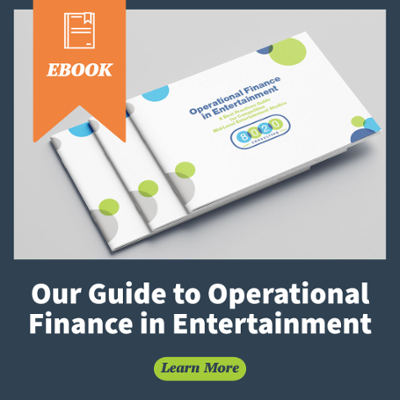
The success of any film hinges on more than just creative vision—understanding and perfecting film ultimates is crucial for accurate revenue forecasting and financial planning. Entertainment finance professionals often face challenges evaluating a production’s performance, which can lead to increased costs and lower buy-in if not addressed. This guide covers the essentials of creating accurate film ultimates, ensuring that studios maximize their return on investment.
Key Takeaways:
|
Table of Contents
- What is a Film Ultimate
- Key Revenue Streams in Film Ultimates
- Essential Costs in Film Ultimates
- Strategic Considerations for Long-Term Film Ultimates
- How 8020 Consulting Can Help
What is a Film Ultimate?
A film ultimate is the most complete prediction of the revenue a film will generate during its “first cycle” (i.e., 7-10 years from theatrical release) and allows all departments within a studio to better coordinate events and expectations to make the theatrical release a success.
Starting from the release date, the value of the future cash flow from all streams of revenue relating to the film are factored into the forecast. Although most major film studios conduct some sort of Ultimates process, it is important for all Entertainment Studios to perform such an analysis at least 18-24 months before a film is released.

Key Revenue Streams in Film Ultimates
Building perfect Film Ultimates starts with compiling all worldwide revenue streams throughout the lifetime of the film release. This involves coordination with several departments, and getting all stakeholders “on calendar” is critical to a film’s success. Let’s briefly look at each of these revenue streams:
Theatrical (U.S. and Non-U.S.)
This refers to revenue recognized over the exhibition period. Movies can run 4 months, as a film is released depending on the international release schedule, but most movies have about a 4- to 6-week run in theaters with about a 50% decay rate per week, depending on release timing, competitive releases, and movie genre.
Licensing and Merchandising
This refers to product placement that can be recognized as products hit shelves as early as 4-6 weeks before the film’s release. This can have a long tail based on the affinity of the brand and willingness of major retailers to keep the products on shelves.
PPV / VOD
The replacement of the traditional Blockbuster model, Pay-per-view and Video-on-demand occurs directly after the theatrical run, and it’s a great way to access the digital market.
Subscription Video On Demand (SVOD)
This is the most common revenue model many online video streaming businesses use today. Consider Netflix or Hulu Plus as examples, where users pay a fixed subscription fee once a month and have unlimited access to a variety of video content available on that platform. Studios are paid by these SVOD platforms through licensing agreements, which include a large upfront fee and/or a royalty for every viewing of your movie.
Home Entertainment
This usually occurs 3-4 months after the movie’s release. Although the market for DVD/Blu-ray/Digital has been declining over the last decade, Home Entertainment is still a large revenue driver for studios. Figuring out a way to differentiate this product vs. all the other PPV/VOD/SVOD choices is key to keeping the value proposition in Home Entertainment.
Pay TV
This refers to traditional Cable TV and Satellite TV. Studios make a significant amount of money from selling TV rights to networks on both premium and basic cable. However, with the cord-cutting phenomenon’s gaining momentum over the last few years, this revenue stream has begun to decline.
Free TV
Also known as Basic TV, this works very similarly to Pay TV, with licensing agreements selling TV rights to the broadcast networks.
Essential Costs in Film Ultimates
Beyond revenue, understanding cost drivers is crucial to developing an accurate ultimate. Major costs include pre-production, production, and post-production expenses. These elements are foundational in evaluating the profitability of a film. Key cost components include:
- Production and Distribution: Significant costs tied directly to the film’s creation and dissemination.
- Marketing and Legal Costs: Critical for outreach and protecting the film’s intellectual property.
- Insurance and Contingencies: Required to protect against unforeseen circumstances affecting the film’s release and financial performance.
Cost Amortization
This is based on estimated gross margin for the life of the film, which may change throughout the film’s life. A two-year calculation scenario is noted below to help walk you through this.

High Level Two-Year Amortization Schedule

Above is a Year 1 Scenario indicating Film Ultimate Revenues of $60 and Ultimate Costs at $40, which gives you $20 Ultimate Gross Margin while Year 1 revenue is $20. Applying the amortization schedule formula, we arrive at $13 as our costs to amortize (i.e., amortization expense) in Year 1.


Above is a Year 2 Scenario indicating Film Ultimate Revenues of $60 and Ultimate To-Go Costs at $27, which gives you $13 Ultimate Gross Margin while Year 2 revenue is $15. Applying the amortization schedule formula, we arrive at $10 as our costs to amortize (i.e., amortization expense) in Year 2.

However, in the film business, the Ultimate model may need to be changed as revised revenue assumption numbers materialize (e.g., SVOD viewing assumptions change). Below is an example of a revised Ultimate Revenue ($5 decrease) and the impact to the Ultimate model. You will notice that Gross Margin is now $8 due to Ultimate Revenue decreasing to $35. Applying the amortization schedule formula, we arrive at $12 as our costs to amortize (i.e., amortization expense) in Year 2.


Participations
This is conditional compensation for creative talent (e.g., actors, writers, directors, producers). Compensation paid, if any, is based on contractually agree-upon formulas and cash received (i.e., not revenue recognized). Formulas vary depending on star power of talent (e.g., gross deal vs. net deal).
Residuals
This is additional compensation for “ancillary” markets (e.g., DVD, pay TV, cable, network TV, etc). This is based on the percentage of gross revenues received by a distributor from ancillary markets. Compensation payments made to individuals or to the guilds on behalf of members such as SAG-AFTRA, DGA, WGA, AFM and IATSE.
Other Cost Considerations in Entertainment Finance
Other considerations in Film Ultimates Costs and Expenses include:
- Tax Incentives and Credits offered by various cities, states and countries to entice filming in their locale, which is treated as a reduction to film costs.
- Impairments after release of film due to certain events or changes in circumstances (e.g., Film Performance, Costs in excess of budget, delays, etc.).
Strategic Considerations for Long-Term Film Ultimates
For effective entertainment finance management, close collaboration with finance teams, both domestically and internationally, is essential. By fully understanding revenue and cost drivers, studios can make strategic adjustments when assumptions change, allowing them to respond proactively to market dynamics.
The addition of a dedicated finance consultant can support studios in refining their ultimate models, driving stronger, more sustainable revenue while controlling costs. A specialist can offer invaluable guidance, ensuring film ultimates are adaptable to the unpredictable nature of the entertainment industry.
See How 8020 Consulting Can Support Your Entertainment Finance Goals
If you’re looking for a comprehensive approach to film ultimates and the forecasting strategies that drive success in entertainment finance, 8020 Consulting can help. Book a meeting today to explore how we can enhance your project’s financial planning and position you for success in a competitive industry.
If you’d like a broader exploration of operational finance in entertainment, you can also download our best practices guide for competitive mid-level studios by clicking the button below.




